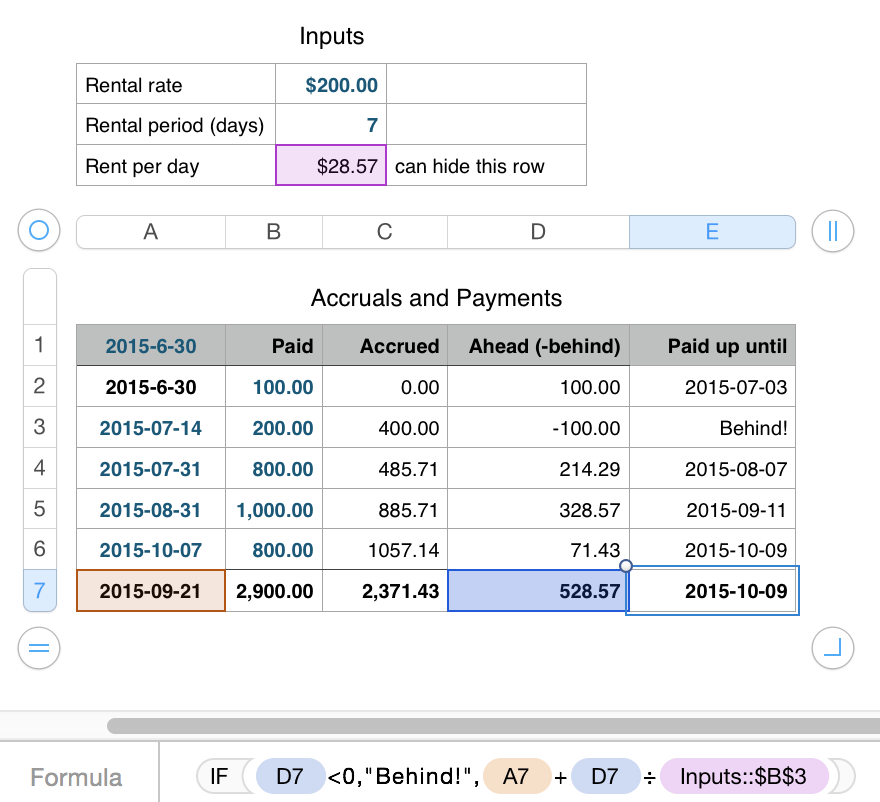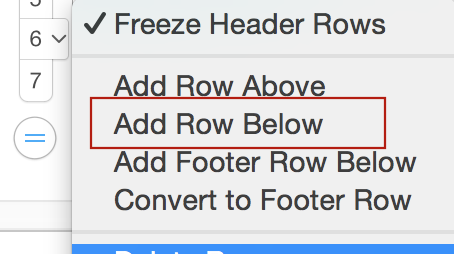Galutus wrote:
I'm wondering if there is a way to format a column so that when I put the rent paid in one column, it automatically calculates the date it is paid up till? The rent is rarely paid weekly, it might be 2, 4 or 5 weeks at a time so I was hoping to be able to have a column that calculates when it is due again.
You might try something like this to keep track of irregular rent payments and when your next payment is do.
"Accrual" simply means the rent attributable to that period based on the rental rate (the rate for convenience in date arithmetic is converted into a daily rate in B3 of the 'Inputs' table). The accrued rent is compared to the rent actually paid. If you've paid more than what has accrued then column E shows how far in the future you are fully paid. If you've paid less than what is accrued, column E declares that you are behind.

The first row of the table is defined as a Header Row and the last row as a Footer Row.
Data is input in cells where font is blue. Everything else is calculated via formula.
The formulas in the 'Inputs' table:
C3: =B1÷B2
The formulas in the 'Accruals and payments' table:
A2: =A1
A7: =TODAY()
B7: =SUM(B)
C2 (copied down to the rest of cells in body of that column):
=DUR2DAYS(A2−A1)*Inputs::$B$3
C7: =DUR2DAYS(A$7−$A$1)*Inputs::B3
D2 (copied down to rest of cells in body of that column):
=DUR2DAYS(A$7−$A$1)*Inputs::B3
D7: =B7−C7
E2 (copied down to rest of cells in that column):
=IF(D2<0,"Behind!",A2+D2/Inputs::$B$3)
E7: =IF(D7<0,"Behind!",A7+D7/Inputs::$B$3)
To add payments as you go along simply add a row in the body of the table by choosing 'Add Row Below' from the dropdown by the last body row number.

The red warning triangles will disappear after you fill in the date and payment amount in the new row.
SG